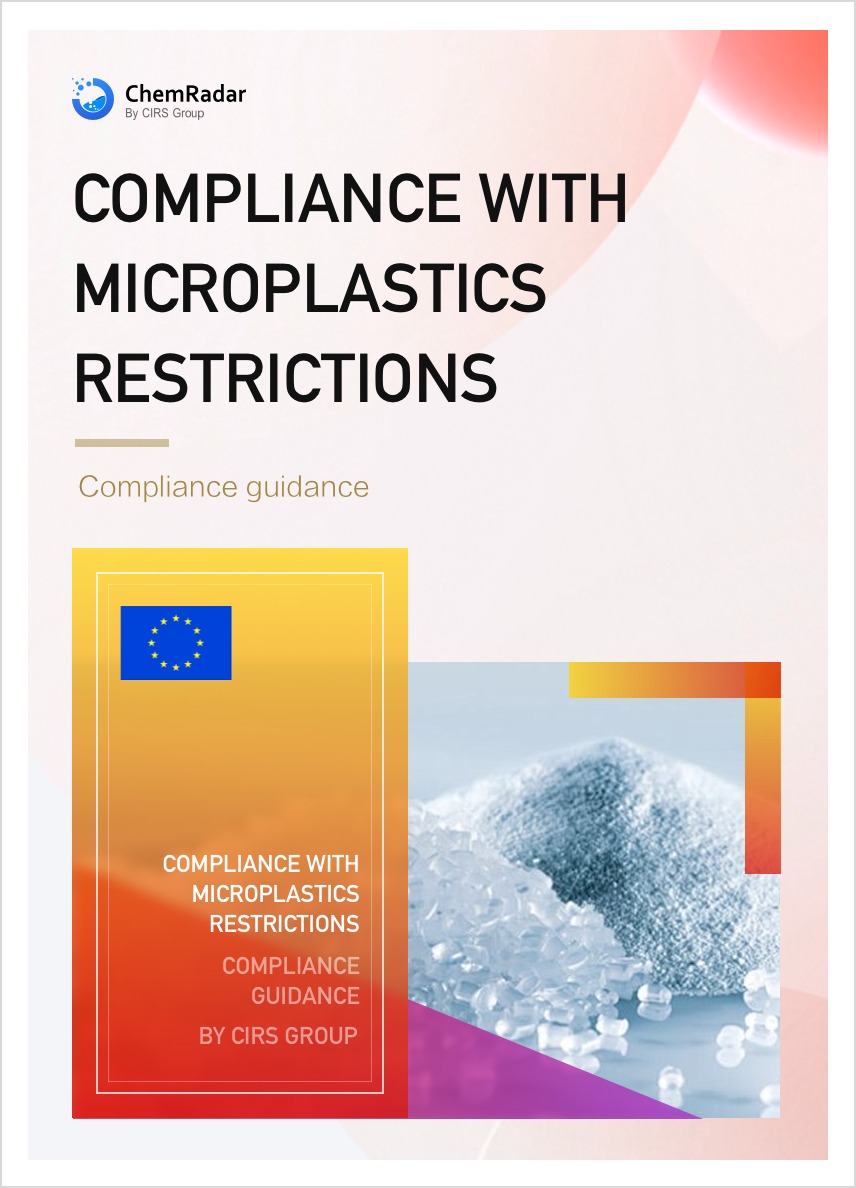4. Compliance
How should relevant enterprises properly respond to microplastic restrictions, and are there any exemption clauses that can be utilized? Experts from CIRS will explain these one by one.
I. Exemption by Definitions
- If an enterprise's product is not a polymer, there is no need to consider the restriction requirements.
- If the product particles are large, in block, flake, or large spherical forms, and all dimensions are greater than 5mm, or if particles less than or equal to 5mm constitute less than 1% of the product, it meets the restriction requirements. Particle size distribution testing can be used to determine if the product meets these requirements.
- Consists of natural polymers that have not been chemically modified.
- Degradable polymers, with common testing methods including OECD 301B-F, OECD 302C, OECD 306, OECD 307, OECD 308, OECD 309, OECD 310, and other ISO standard testing methods. It is important to note that these methods have different pass standards, and only polymers that meet the pass standards of the respective methods are considered degradable.
- Polymers with a solubility greater than 2g/L, tested using OECD 105 or OECD 120.
- Polymers whose chemical structure does not contain carbon atoms, requiring that the polymer's structure contains no carbon atoms at all.
II. Exemptions by Use
- Synthetic polymer microparticles used as individual substances or in mixtures at industrial sites;
- Medicinal products within the scope of Directive 2001/83/EC and veterinary medicinal products within the scope of Regulation (EU) 2019/6 of the European Parliament and of the Council;
- EU fertilizer products within the scope of Regulation (EU) 2019/1009 of the European Parliament and of the Council;
- Food additives within the scope of Regulation (EC) No 1333/2008 of the European Parliament and of the Council;
- In vitro diagnostic devices, including those within the scope of Regulation (EU) 2017/746 of the European Parliament and of the Council;
- Foods covered by the meaning of Article 2 of Regulation (EC) No 178/2002, which are not covered under this item (d), and feeds as defined in Article 3(4) of the same Regulation.
III. Exemptions by Exposure
If an enterprise takes measures to prevent the release of synthetic polymer microparticles into the environment, it will also meet the microplastic restriction requirements, including the following measures:
- Through technical means, synthetic polymer microparticles can be prevented from being released into the environment when used according to the instructions during the expected final use process;
- The physical properties are permanently altered during the expected final use process, such that the polymers no longer fall within the scope of synthetic polymer microparticles covered by this entry;
- Synthetic polymer microparticles that are permanently incorporated into a solid matrix during the expected final use process.
If a company's polymer products do not meet any of the above exemption conditions, different information must be provided and annual reports submitted for different industries. Taking industrial use as an example, the following two key obligations must be met:
a. Information Transmission Obligation
Starting from October 17, 2025, suppliers who synthesize polymer microparticles at industrial sites should provide the following information:
- Instructions to industrial downstream users on how to prevent the release of synthetic polymer microparticles into the environment during use and disposal;
- The following statement: "The supplied synthetic polymer microparticles must comply with the conditions set out in Article 78 of Annex XVII of Regulation (EC) No 1907/2006 of the European Parliament and of the Council";
- Information about the quantity or concentration of synthetic polymer microparticles in the substance or mixture, if applicable;
- General information about the polymer characteristics in the substance or mixture, enabling manufacturers, industrial downstream users, and other suppliers to fulfill the obligations stipulated in Articles 11 and 12.
b. Annual Reporting Obligation:
Starting from 2026, manufacturers and industrial downstream users who use synthetic polymer microparticles in the form of granules, flakes, and powders as raw materials for plastic manufacturing at industrial sites, as well as other synthetic polymer microparticle manufacturers and other industrial downstream users starting from 2027, must submit the following information to ECHA by May 31st each year:
- A description of the uses of synthetic polymer microparticles during the previous calendar year;
- General information about the polymer characteristics for each use of synthetic polymer microparticles;
- An estimate of the quantity of synthetic polymer microparticles released into the environment for each use during the previous calendar year, including quantities released during transportation;
- For each use of synthetic polymer microparticles, reference to the exemption provisions regarding the synthesis of polymer microparticles at industrial sites as mentioned in 4(a).



